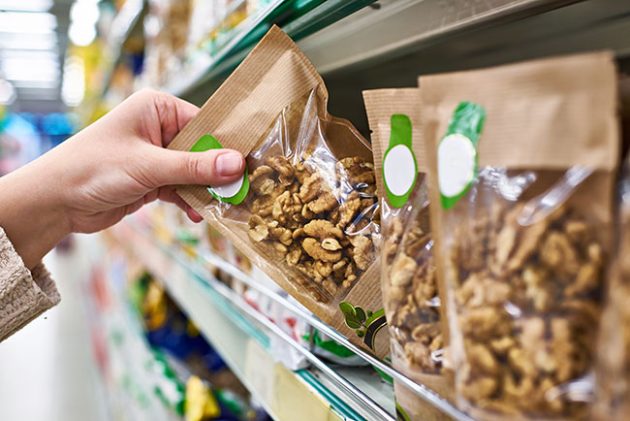
Packaging: Helping your product stand out
By Carol Zweep
Packaging Editor pick marketing NSF International Packaging design sustainability Photo © Sergey Ryzhov/Adobe Stock
Photo © Sergey Ryzhov/Adobe Stock Packaging is the first impression of your product to a prospective buyer. It can make or break the sale and greatly impact consumers’ impressions of your product and brand. By strategically designing packaging to appeal to your target audience, you can entice consumers to take a closer look at what your product has to offer and, ideally, drive them to purchase.
Design techniques
Different design techniques can be used to target certain demographics, spark interest and evoke a connection with the consumer. For example, minimalist design offers simple, clean labels free of clutter, while the use of abstract patterns, prints with geometric shapes or colour gradients provide a more modern feel. Use of fine art could appeal to those with more traditional tastes and give the impression of product dependability and proven quality, while a vintage look could invoke nostalgia and a certain hip factor. Packaging can also be customized to create a personal connection with the consumer. Texture like metallic effects, embossed labels or glossy finishes can be added to convey a premium feel while the use of transparent windows can showcase the visual appeal of a product.
Online shopping
Packaging is even more important as the shift to online shopping has accelerated due to the COVID-19 pandemic and made e-commerce a permanent reality. Brands must take this into consideration when designing packaging to ensure they are able to connect with consumers both in the retail environment and online. Unlike walking through a store and experiencing an array of products to choose from, the package must entice purchases through the screen and meet the consumer where they are. If done well, the package might also provide an engaging, branded unboxing experience.
Packaging design incorporates elements of graphics and colour and can take the form of different shapes and materials. The format of your packaging can be as diverse as food types and range from boxes and bottles to pouches and bags. Customized package shapes can create a unique look and provide differentiation from the competition. Functionality, such as the ability to use the package in the microwave and seal it after opening, are additional features that can also be incorporated into the design.
Sustainability
Sustainability is also influencing purchasing decisions as individuals look to reduce their own personal environmental footprint. To accommodate this, many companies are stepping away from plastic and multi-layer packaging solutions and seeking recyclable mono-material packaging. Glass and aluminum can be endlessly recycled without compromising material strength, and consumers are looking increasingly to biodegradable and compostable options. Sustainable packaging involves sourcing, developing and using packaging solutions that have minimal environmental impact and footprint.
Immersive design
Use of QR codes in design have enabled consumers to learn more about the product and its benefits and uses beyond what you can fit on the package. Augmented reality (AR) is also changing the way we interact with product packaging by superimposing virtual information onto the line of sight in real time and enhancing packaging appeal, improving brand loyalty, attracting new customers and standing out from competitors. Now that most mobile devices are equipped with QR code and AR readers, this is driving consumer engagement at the point of purchase.
At its core, the role of packaging is to protect the contents and maintain food quality. However, with increased competition in the market (both in store and online), strategically designing a product’s packaging has never been more crucial. Use of eye-catching graphics, colour and design are instrumental in capturing the consumer’s attention. Other factors, such as environmental impact and brand messaging, are equally important and should be taken into consideration when designing your package.
Carol Zweep is senior packaging lead for NSF Canada. Contact her at czweep@nsf.org.
Print this page